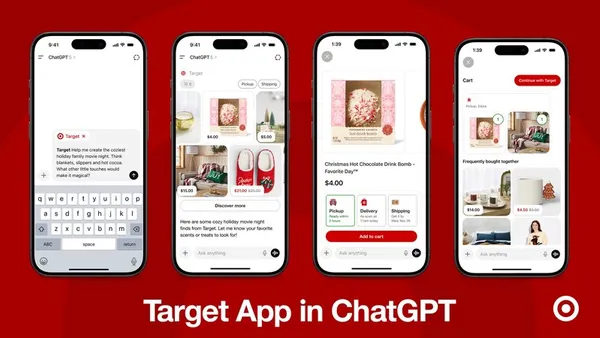Brief:
- Bloomberg Media introduced self-serve software that lets brands repurpose their existing social media ads on the mobile versions of its digital outlets. The business news provider's Boost tool gives marketers access to its premium ad inventory and tracking features, per an announcement shared with Mobile Marketer.
- Boost automatically converts ads designed for Facebook, Instagram, LinkedIn or Twitter into banners on its mobile platform. Bloomberg Media says Boost delivers viewer attention time that's five times as long as that on Facebook, which is nine to 12 seconds.
- Bloomberg touted its trusted editorial content as a key differentiator from social media rivals. The company collaborated with ad-tech platforms Polar and DanAds on the Boost software tool, per its announcement.
Insight:
Bloomberg Media's new Boost self-serve tool aims to simplify the process of converting ads originally intended for social media into banners that can reach its audience of business news consumers. With the software tool, mobile marketers can avoid the extra cost of redeveloping their existing creative for use on Bloomberg's media outlets, giving them the possibility of reaching additional audiences.
News sites last month saw a surge in web traffic as the coronavirus pandemic led to heightened interest in the topic among homebound consumers, though more recent data indicates that the activity has leveled off, per data cited by Harvard's Nieman Journalism Lab.
As municipalities prepare to re-open their economies, Bloomberg Media can participate in the recovery of mobile advertising with its Boost self-service tool. Media outlets have seen a drop in demand for ad inventory with many industries scaling back their operations during the pandemic. Almost all media sellers expect a decrease in revenue this year, while 69% are adjusting their forecasts, per a survey by the Interactive Advertising Bureau (IAB). Among the media outlets that have adjusted their forecasts, 30% expect a slight rebound in Q3 while 22% expect Q4 to show signs of recovery despite declines to their original plans, the IAB found. Other surveys have noted increases in mobile usage during the pandemic, but the pullback in ad spending has limited the ability of media outlets to monetize that higher traffic, per eMarketer. The new Boost tool could help Bloomberg Media stave off some of the revenue dip.
With its Boost service, Bloomberg Media aims to capture greater ad spending among mobile marketers that create ads for social platforms. Their respective sales trends will become more evident this week as Facebook and Twitter report Q1 results and provide commentary about 2020 outlooks, though the pandemic has made forecasting more difficult.
Facebook last month hinted that its ad business had been negatively affected, while Twitter withdrew its revenue guidance amid shrinking demand for its ad inventory. Snap last week reported strong Q1 results, indicating that its business strategy had boosted revenue and usage, though the pandemic didn't lead marketers to pull back until later in the quarter. The current quarter will be more indicative of how the coronavirus has dampened demand for social media advertising, but those results won't be evident until the next reporting period in three months.











